Building a Navigation Component with Variables
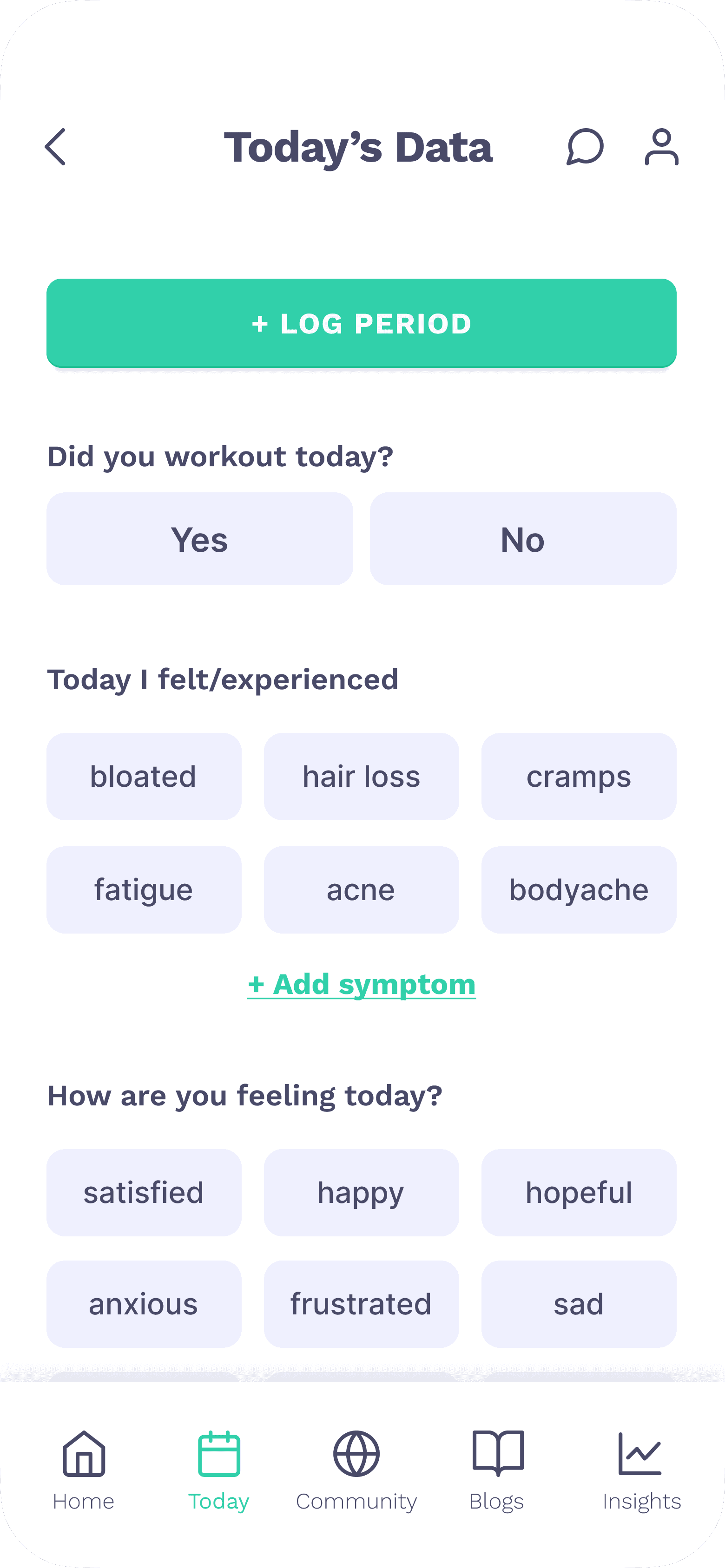
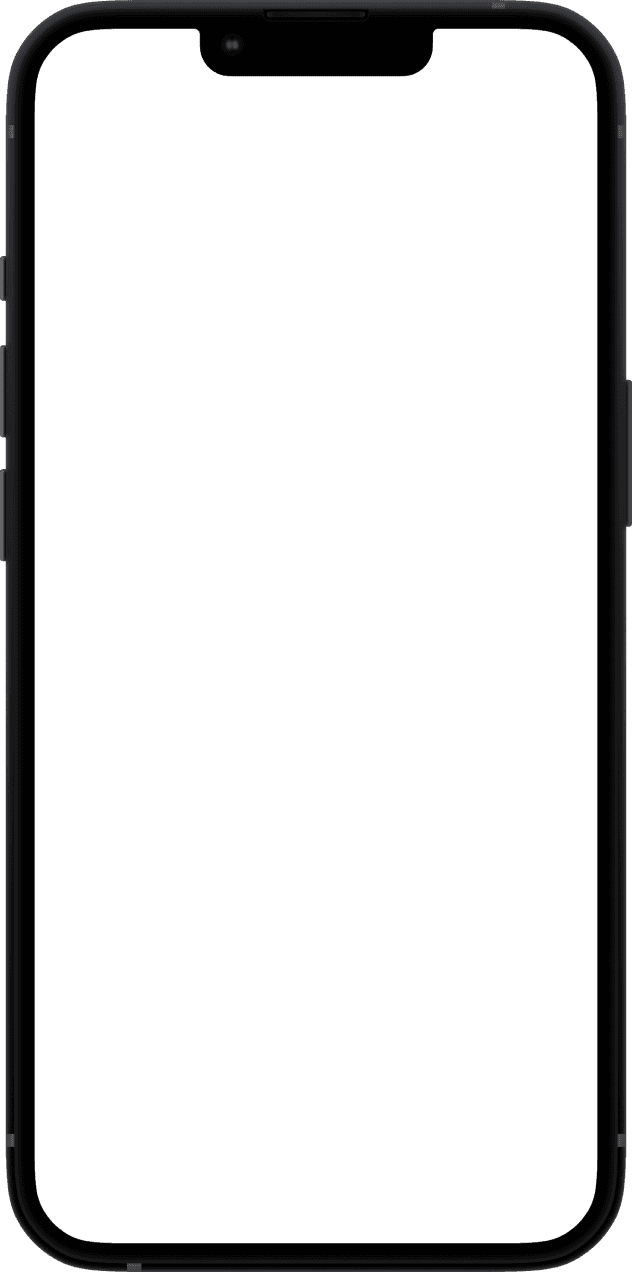
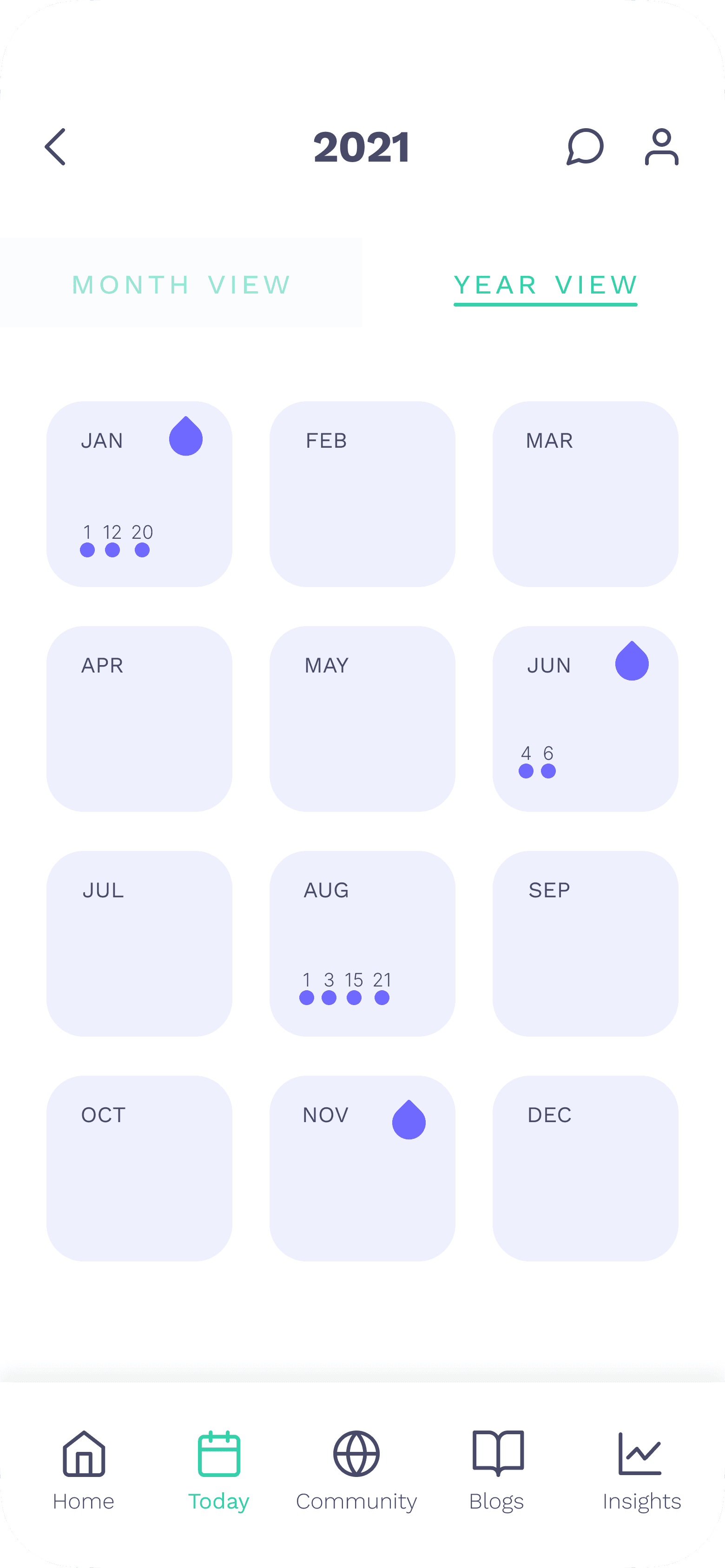
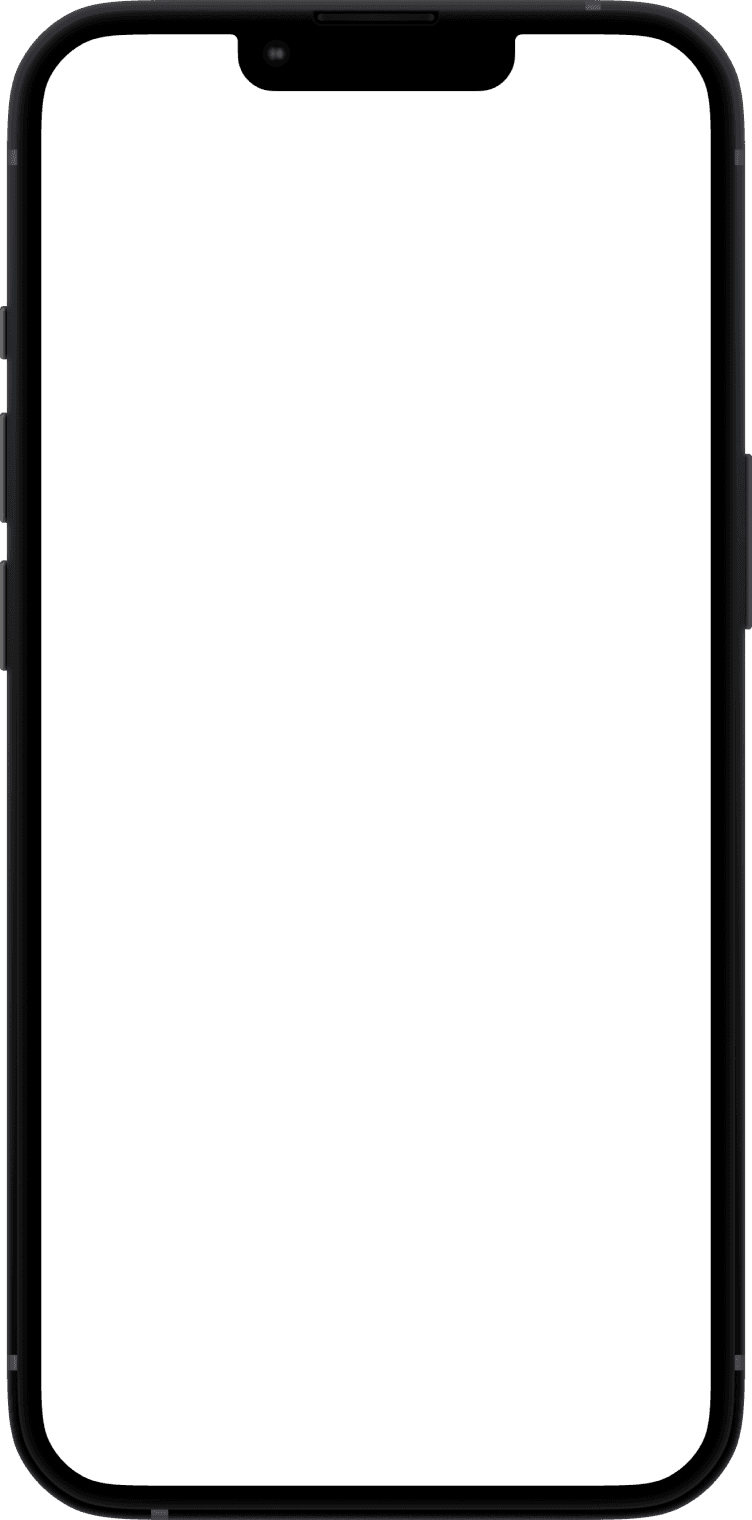
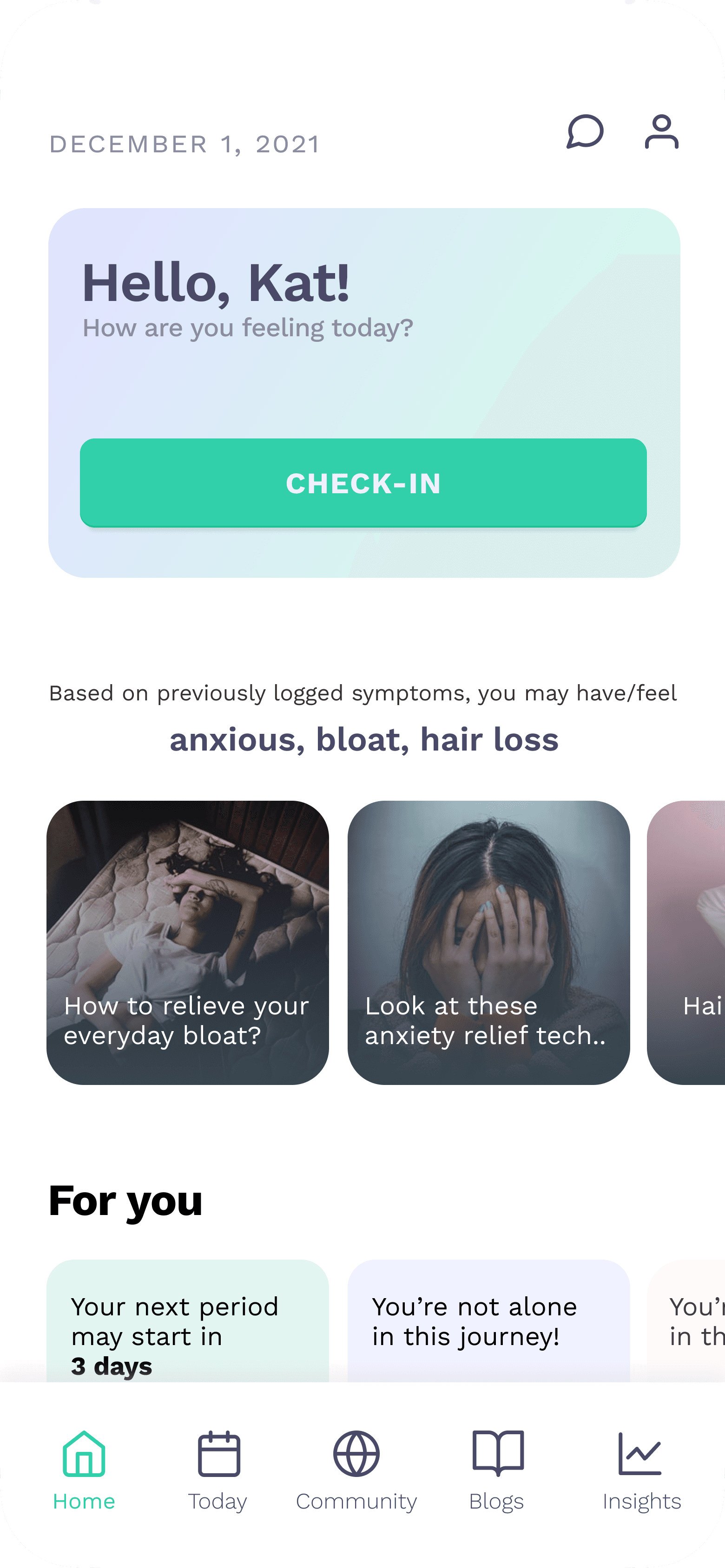

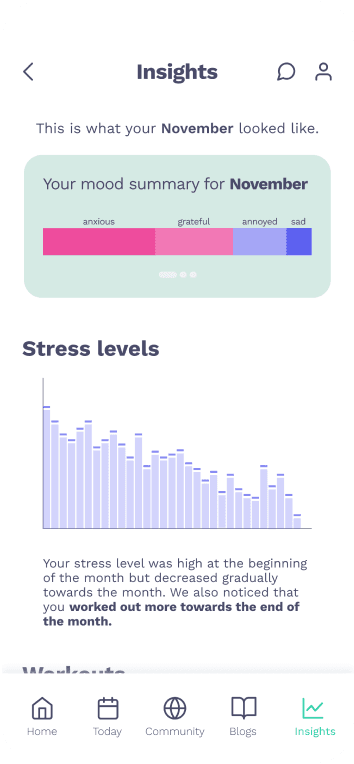

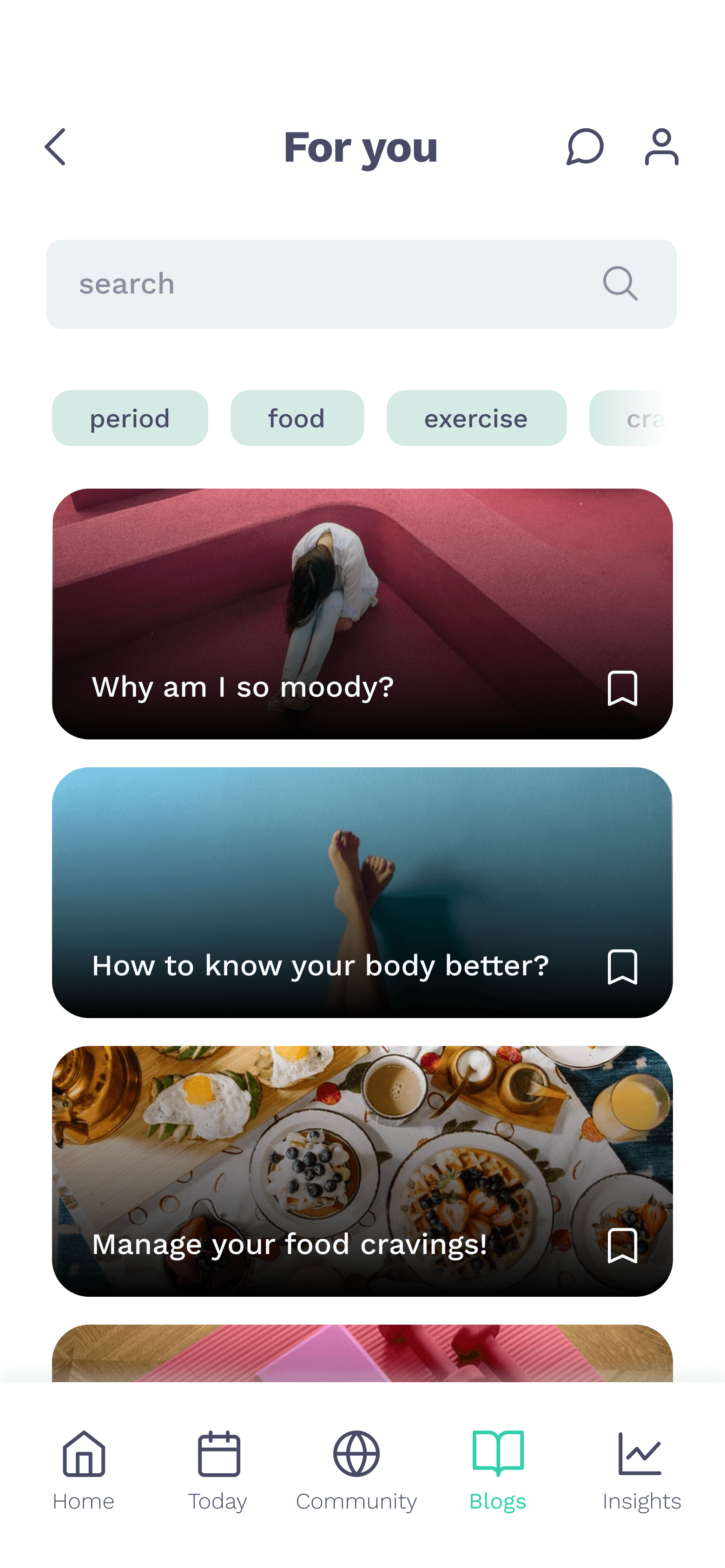

MY ROLE
Duration
Tools
TEAM
Naishi Shah(me!)
Samira Bandaru (UX research)
Srikruthi Matli (UX research, testing)
Yujie Chen (UX research, testing)
What are we trying to solve?
About 6% to 12%(about 5 million)* of reproductive aged women suffer from PCOS.
*according to CDC as of August 2024

what is PCOS?
When the ovaries produce an abnormal amount of androgens, male sex hormones that are usually present in women in small amounts.
symptoms
Missed or irregular menstrual periods, excess hair growth, acne, infertility and weight fluctuations, oily skin, pelvic pain.
treatment
Making lifestyle changes such as lower-calorie diet, losing weight, and getting more physical activity.
How might we help PCOS patients feel included and normal?
Outcome and Impact
In the testing and feedback collection(3 users and 1 expert) of the Menstrually prototype, PCOS patients had a positive reaction to the product and the opportunity to be able to use it for their mental well-being and menstrual health. The app's intuitive design and personalized support features not only streamlined tracking but have also fostered a more proactive and informed approach to self-care.
Roadmap
Why are we trying to solve this problem?
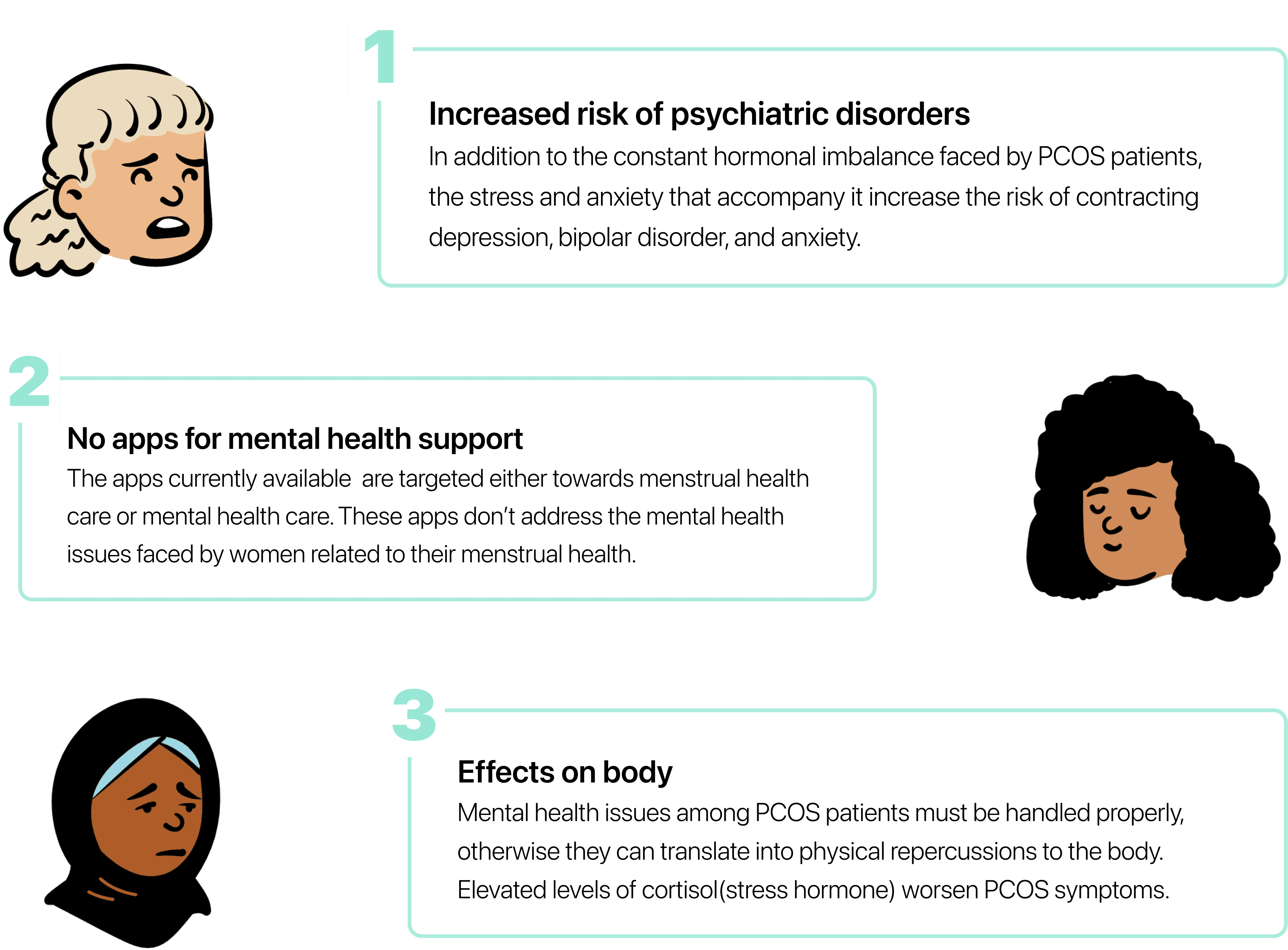
Competitive Analysis
The apps available in the market are either to maintain mental health or to manage menstrual health. Since there is a gap in mental health-specific technologies that serve a wide demographic of menstrual tracking users, we have chosen to focus our efforts on building a solution targeted towards women with PCOS.
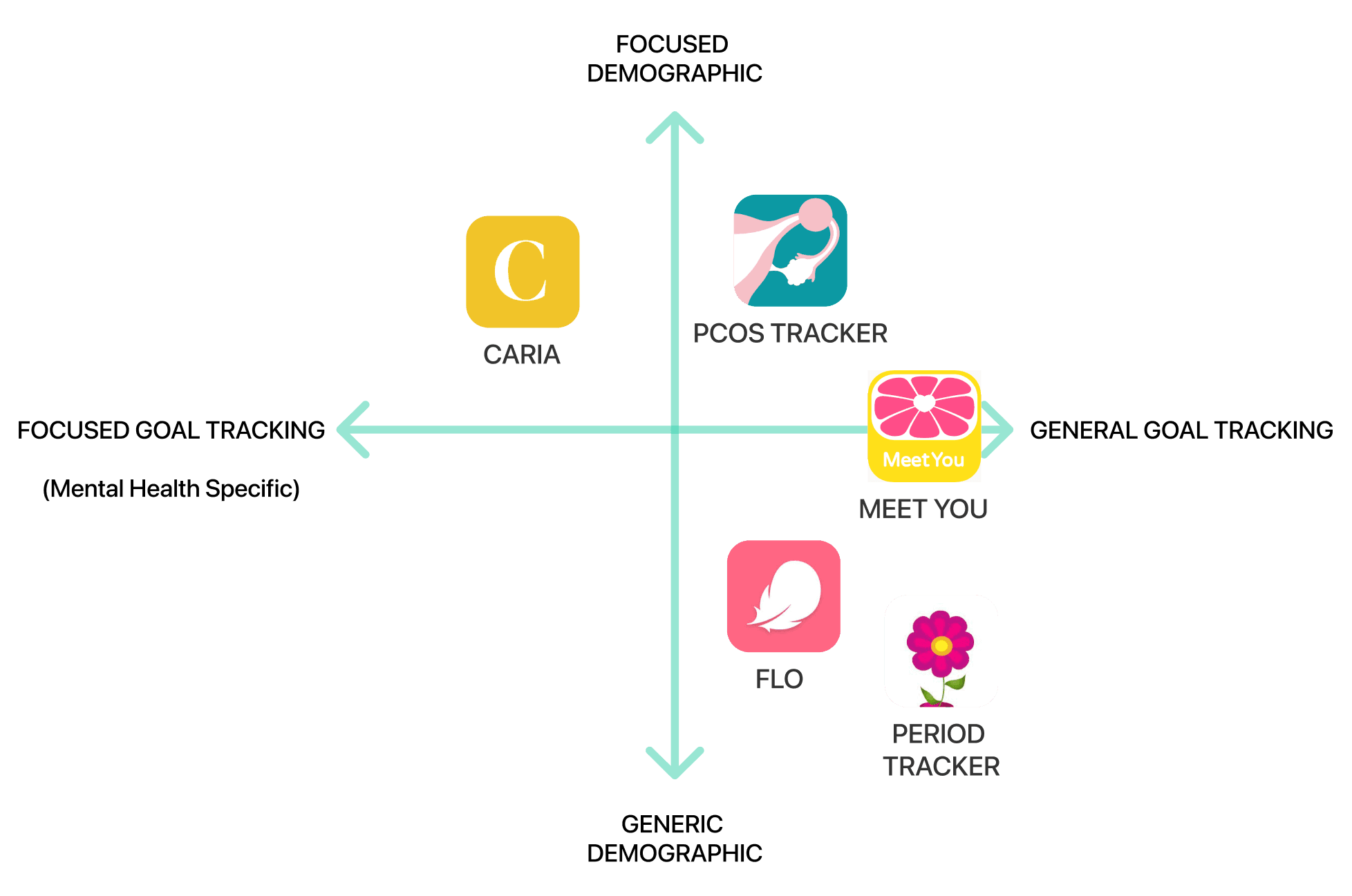
Surveys and Interviews
In order to collect both quantitative and qualitative data, we conducted a survey with 24 participants.
To understand user's pain points and frustrations with the existing apps, issues related to PCOS and mental health, we conducted semi-structured interviews with an OB-GYN with 30+ years of experience and 5 patients.

Our stakeholders said...
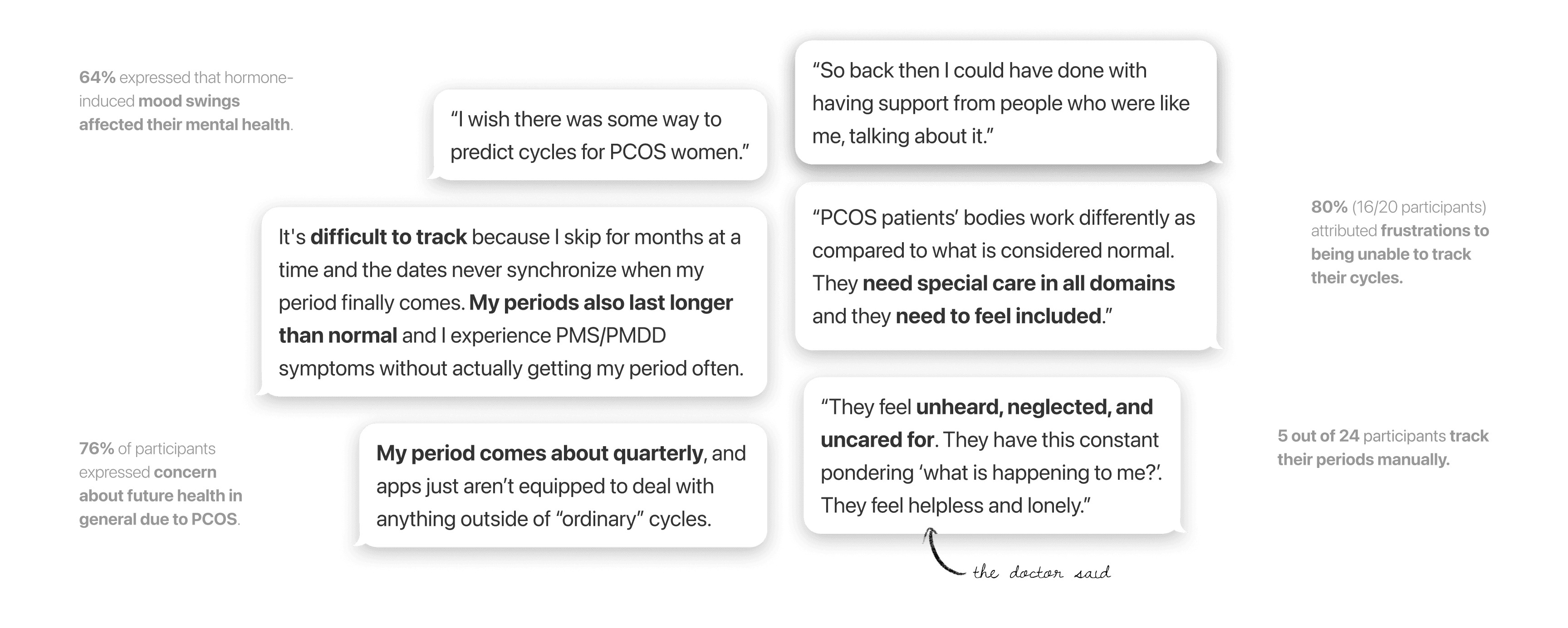
Three
key findings
from primary and secondary research

Note: We decided not to design a solution for the first insight because of the sensitivity of weight issues, especially among women suffering from PCOS.
challenge #1
We assumed that PCOS patients need Cognitive Behavioural Therapy(CBT) to manage their mental health.
However, our research indicated that what we are trying to solve is different from what our users need!

How did we tackle it?
We revised the problem statement to focus on our users’ needs, rather than the initial focus of the research.
User flow and Information Architecture


Wireframes
Iteration 1

Community Support
Our research shows that when people are diagnosed with PCOS, they often don't know who to talk to. Many believe it's a rare condition, leaving them feeling lonely and scared.
The app creates a space for patients to share experiences and find encouragement in their fight against PCOS. To reduce isolation, it also allows users to invite friends and family for support.
Informative resources
A key frustration is the lack of reliable information, as menstrual health is often taboo.
The app offers personalized blog suggestions based on logged symptoms and lets users filter blogs by tags or search specific topics.


Tracking irregular cycles
To address the challenge of tracking irregular cycles, the app's Home Page features a circular year view instead of a typical one-month cycle. Users can track both their periods and habits, with the months they menstruate highlighted on the calendar.
A scoped yearly calendar is more intuitive and easier to read than the circular view. Clicking on a month brings up the circular monthly view, where users can log symptoms daily.

Iteration 2
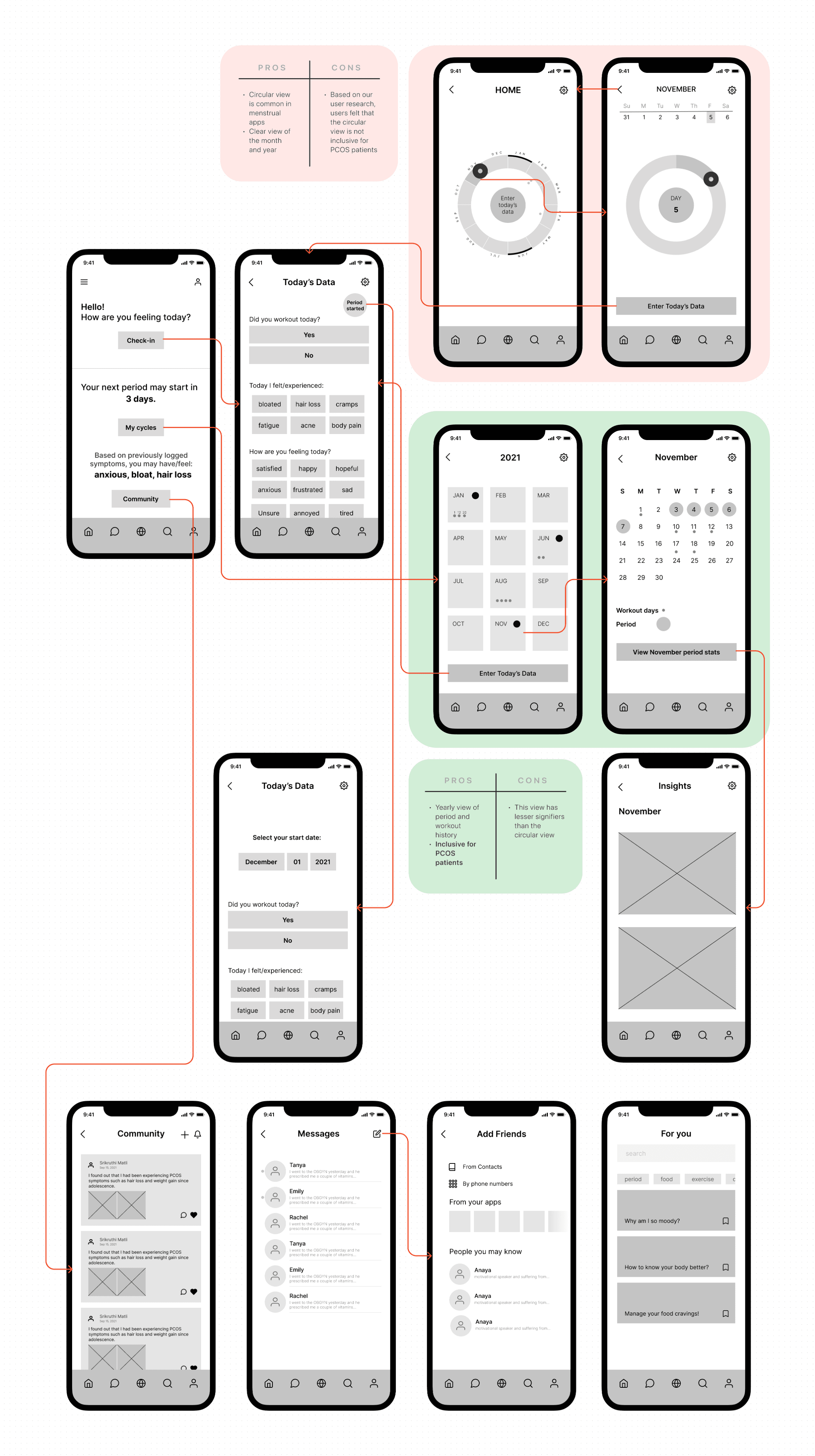
Features that track irregular cycles, provide informative resources and experience personalisation

Tracking irregular cycles
Since women with PCOS have irregular menstrual cycles and it is the primary reason they feel abnormal, Menstrually is not based on monthly period tracking. It provides flexibility and customization of tracking cycles.
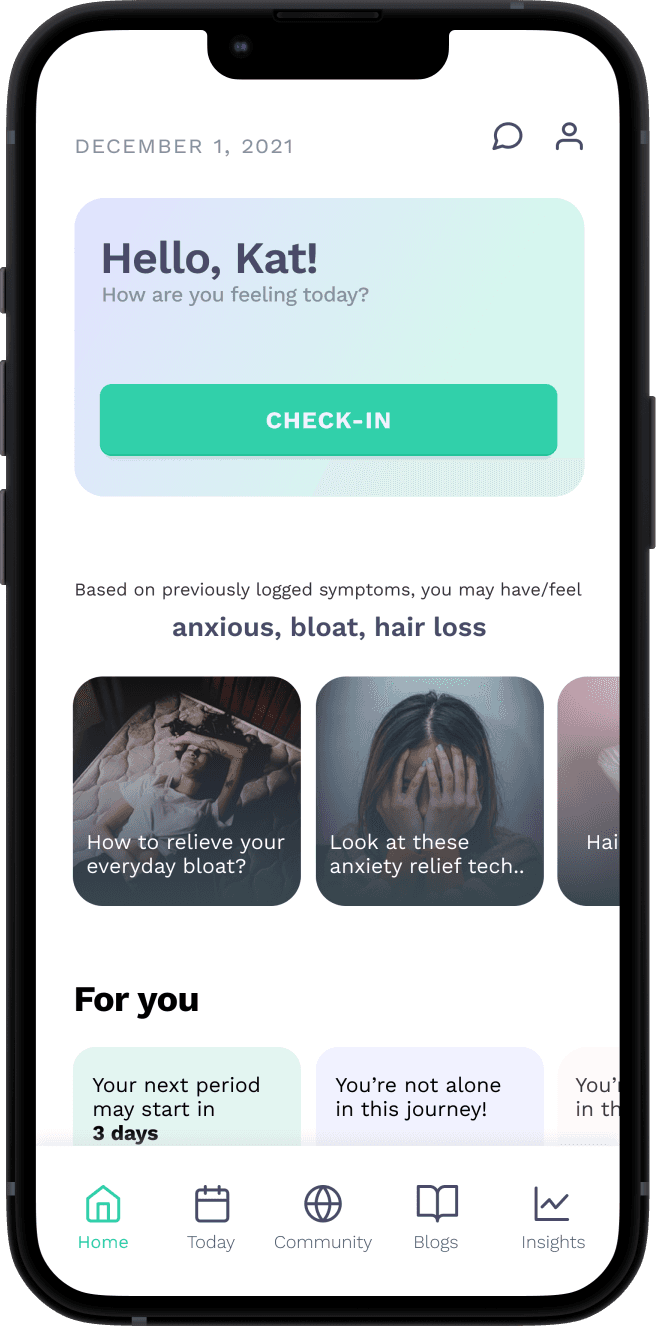
Personalisation
No two patients are the same and hence, Menstrually provides complete customization to its users like the symptoms that the user might be facing, quick links and blogs relevant to the user, friend recommendations and most importantly, monthly insights.
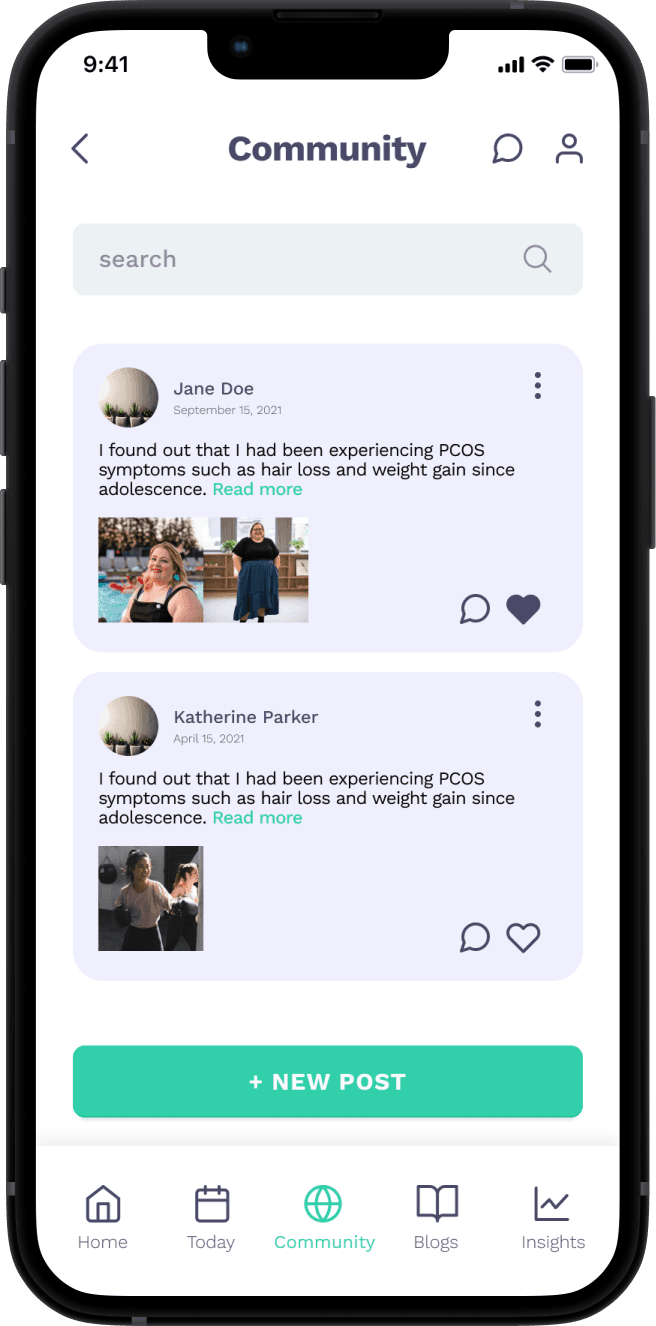
Community and Informative Resources
As a solution to the feeling of exclusion from the conventionally normal women felt by PCOS patients, Menstrually provides community support such as post sharing and talking to other women on the platform and informative resources like relevant blogs and articles.
Visual Design Guide
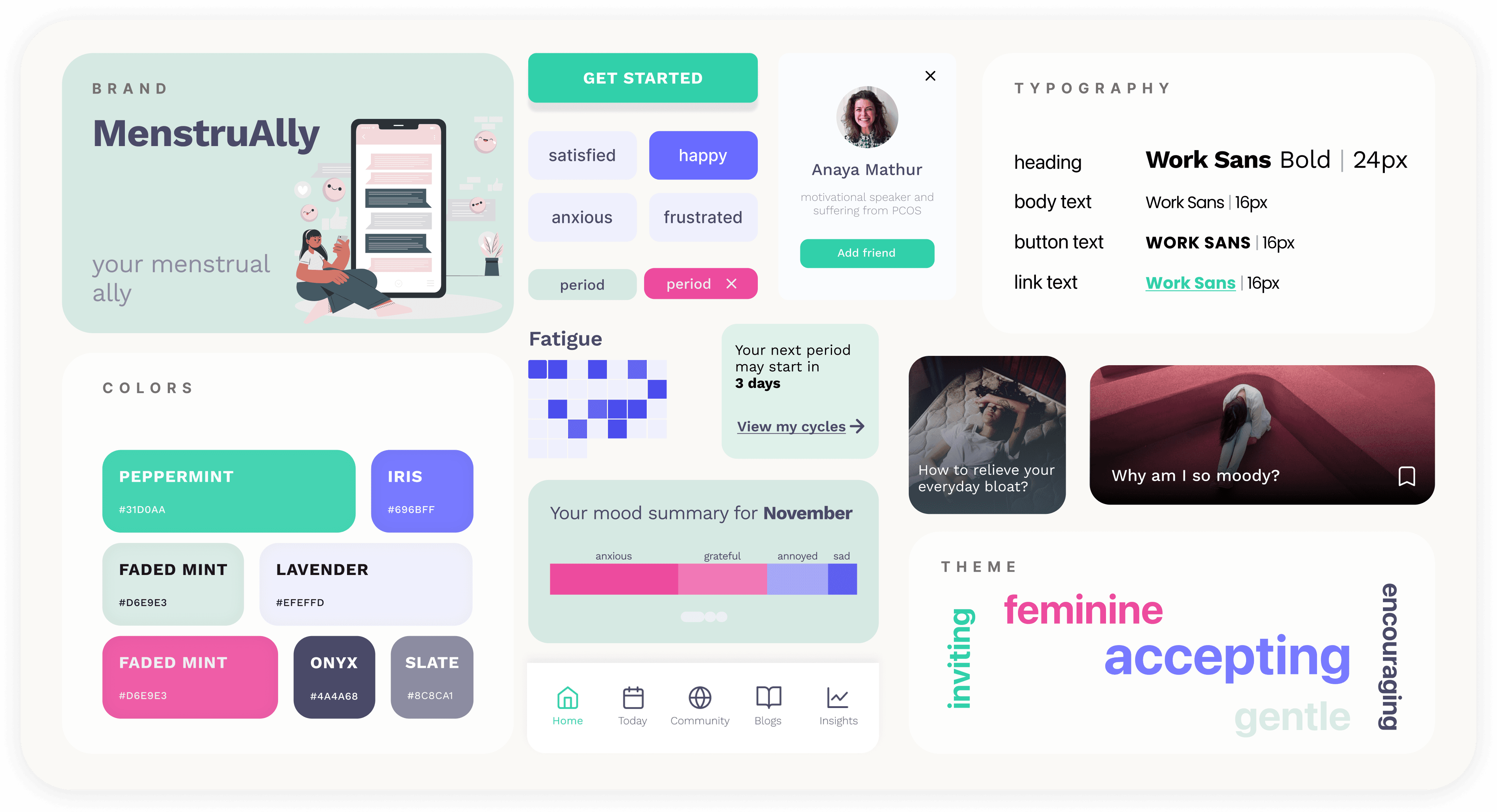
Prototype
Menstrually - an app concept for tracking irregular periods with a simple and minimal user interface and intuitive, familiar user experience design. The feedback from the wireframes was incorporated into the final prototype.
Interact with prototype
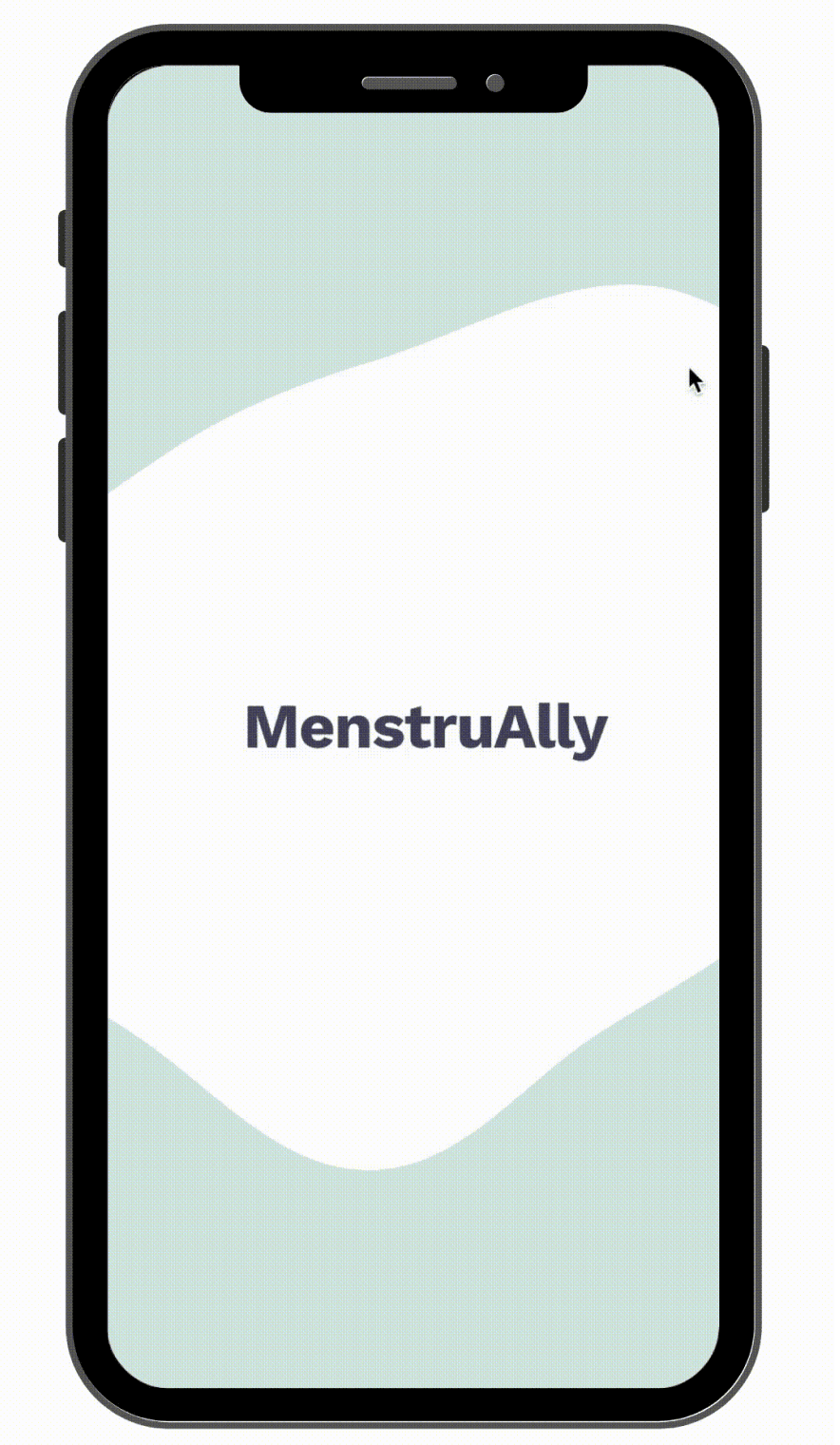
Designed in Figma
user testing and evaluation
Feedback
Three users interacted with a Figma prototype while thinking aloud. They first explored the app independently to assess usability and adherence to design heuristics. Then, they completed a series of tasks and provided feedback on their decisions and suggestions for improvements.
participants
3 users
1 expert
Walkthrough
Usability Testing
General Feedback
methods
Walkthrough
Usability Testing
General Feedback
mode
tasks
Task 1 - Log your symptoms today
Task 2 - Find the days you worked out in November
Task 3 - Navigate to the community feature and see what Jane Doe just posted
Task 4 - Find two insights about your stress level and mood in November
Task 5 - Find a blog about diet management and save it
Findings from user testing

reflection
Learnings
1. Different research methods produce different results.
Through the course of this project, user research, especially requirements gathering played an imperative role. As it was concluded from user research, the actual problem was different from what users wanted. Our observations led us to hypothesize that PCOS patients require mental health support using Cognitive Behavioral Therapy whereas the users we interviewed and surveyed were more concerned and troubled by the lack of period tracking apps and community support for PCOS patients.
2. Empathy is inclusivity.
Solving sensitive problems is tricky. Although it is a great feeling to try to help make people's lives better, it's crucial to know where to draw the line. Respecting the sensitivity of some issues and not pursuing them further is the best thing to do sometimes.
Improvements
1. Empathy maps would have given a better understanding of our users.
Empathy brings humanity to problem-solving. Since PCOS is a sensitive topic, empathy maps as a research method would have given us a better understanding of their pain points, gain points, how they feel and what they need.
2. Obtaining feedback on lo-fi prototypes would have led to a better design.
Due to the short duration of the project, we could only test our final designs with our users. Obtaining feedback on our wireframes would have helped us identify the importance of various features we were trying to incorporate based on user research and would have given us a fair idea of what is working with our users and what isn't.
